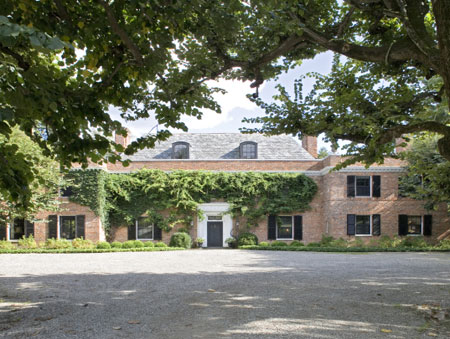English country house in New York
A house which was once the seat of the Earls of Essex and whose parts were used for a new house built in the New York countryside is for sale


When Cassiobury House in Hertfordshire, home to the Earls of Essex for more than 250 years, was dismantled in 1927 much of the masonry was used in the construction of a new house of the same name in Bedford, New York.
After the demolition of Cassiobury House, local posters advertised, ‘To lovers of the antique, architects, builders, etc., 300 tons of old oak: 100 very fine old oak beams and 10,000 Tudor period bricks’.
Cassiobury was featured in Country Life on September 17, 1910. It was also featured in our recent publication, ‘Lost Houses of England.’ The outstanding carved staircase - either the work of Grinling Gibbons or Edmund Pearce - can be seen today in the Metropolitan Museum of Art in New York. Today, Bedford is a peaceful enclave of distinguished country estates, about a 45-minute drive from Manhattan. Cassiobury House sits on 23.9 acres bordering the Beaver Dam River.

The 9-bedroom house comes with a two, 2-bed gatehouses as well as a heated swimming pool and barn. The grounds also offer direct access to the Bedford riding lanes extensive network of trails.
Guide price: $9.8m through Houlihan Lawrence (+1 914 234 9099; www.houlihanlawrence.com)
Exquisite houses, the beauty of Nature, and how to get the most from your life, straight to your inbox.
-
 Mark Gatiss: ‘BBC Two turned down The League of Gentlemen six times’
Mark Gatiss: ‘BBC Two turned down The League of Gentlemen six times’The actor and writer tells Lotte Brundle about his latest Christmas ghost story, discovering Benedict Cumberbatch — and his consuming passions.
By Lotte Brundle Published
-
 Wildhive at Callow Hall hotel review: I felt like a squirrel preparing for hibernation and I loved it
Wildhive at Callow Hall hotel review: I felt like a squirrel preparing for hibernation and I loved itThe boutique treehouses at this Derbyshire getaway are the best way to unwind in nature and explore the Peak District, writes Lotte Brundle.
By Lotte Brundle Published

